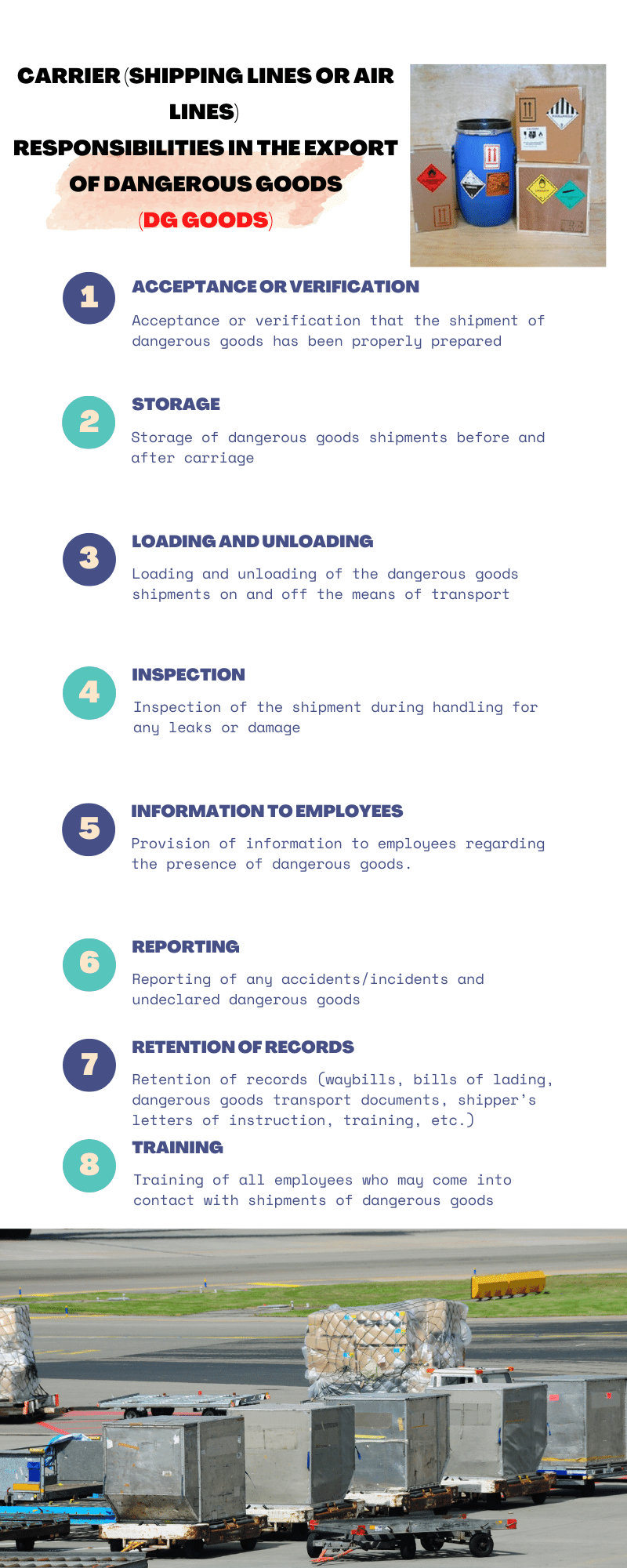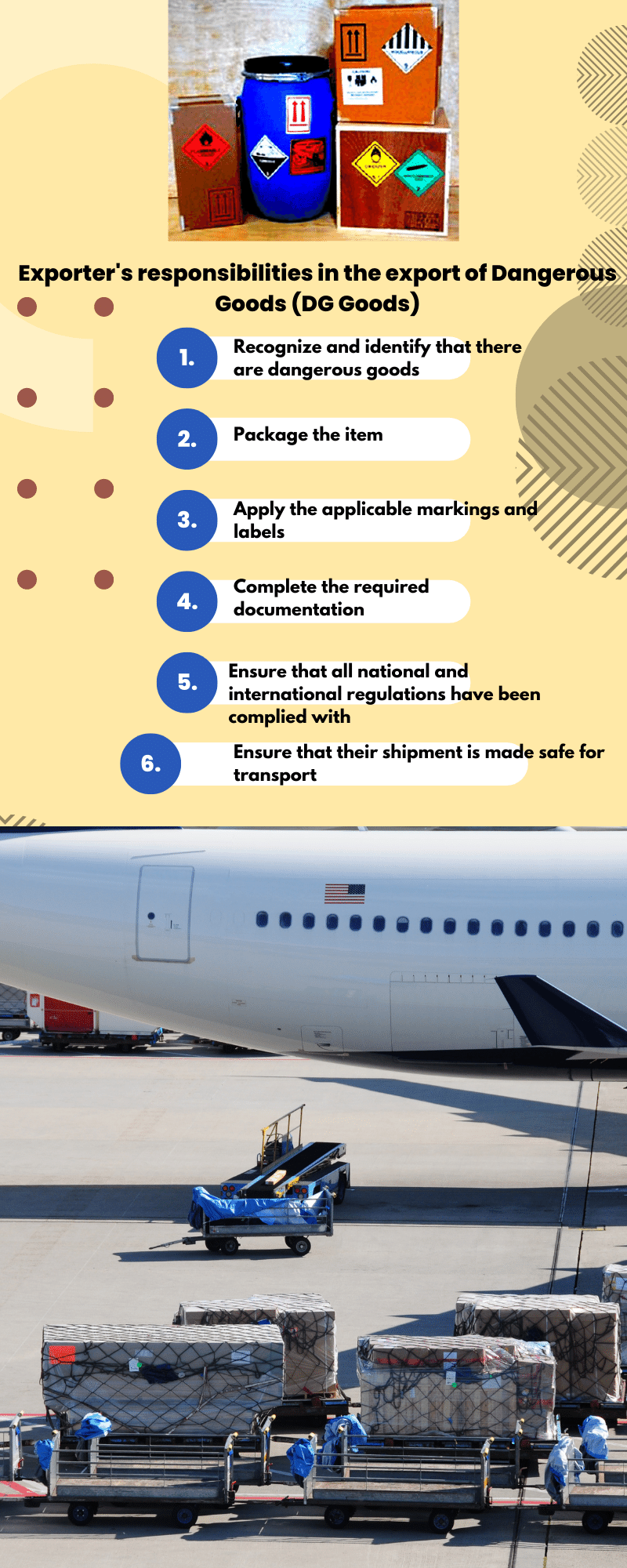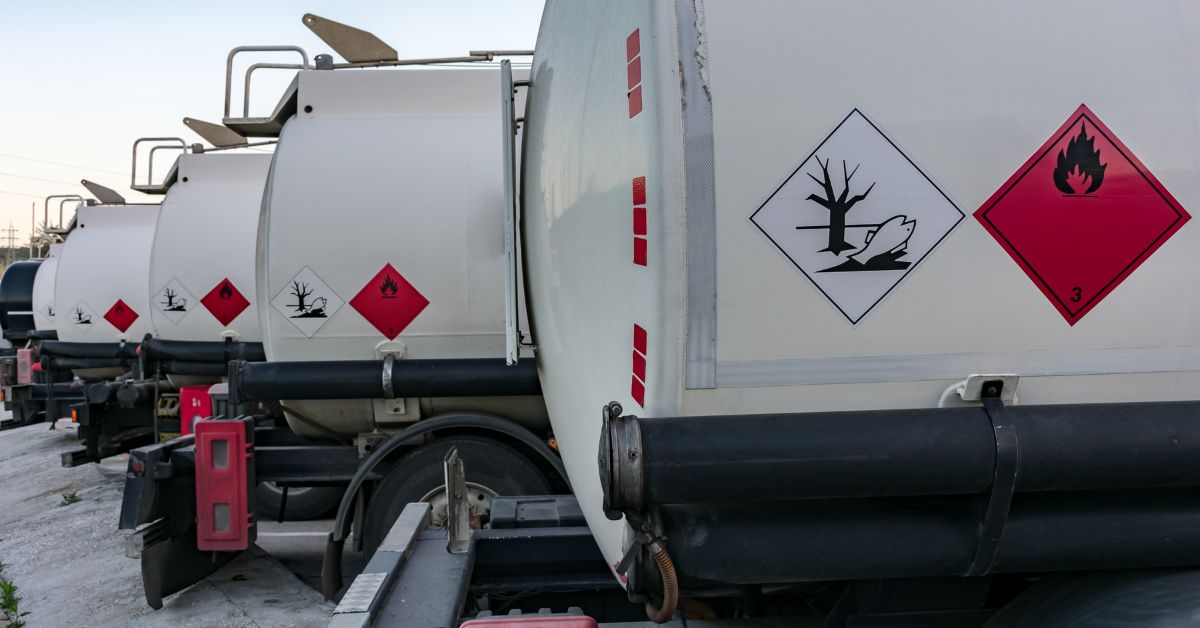What are Dangerous(DG) Goods?
Dangerous goods are products that are capable of posing a significant risk to health, safety, property, or the environment.
In export dangerous (DG) goods & chemicals, dangerous goods are transported on almost every aircraft, ship, truck, and railcar every day and in every country.
Shippers, exporters, and importers must ensure that their goods are properly identified and classified as dangerous goods or not. Once they have determined their goods fall into the category of dangerous goods, they must be properly packaged, marked, labeled, documented, and finally made safe for transport.
Table of Contents
- What are Dangerous(DG) Goods?
- Shipper/Exporter Responsibilities in the Export of DG Goods
- Carrier Responsibilities in the Export of DG Goods
- How do the Parties Handle the Responsibility?
- Identification & Classification of the DG Goods
- Classification of the Dangerous (DG) Goods
- Packaging or Packing of the DG Goods
- Placarding the Cargo Transport Unit (ocean container, railway car, truck/trailer)
- List of additional Markings and Placards
- Documentation process for Sea, Air and Land Goods Shipments of Dangerous (DG) Goods
- Container Packing Certificate
- Fumigation for Safety of Human Health
- Documentation and Identification of Cargo Transport Units under Fumigation
- Conclusion
Shipper/Exporter Responsibilities in the Export of DG Goods
- Recognize and identify that there are dangerous goods in their shipment
- Package the item
- Apply the applicable markings and labels
- Complete the required documentation
- Ensure that all national and international regulations have been complied with
- Ensure that their shipment is made safe for transport
Carrier Responsibilities in the Export of DG Goods
The carrier, shipping lines or air lines, makes the ultimate decision whether the DG goods shipment is acceptable for carriage or not for the voyage.
The responsibilities of the carriers are:
- Acceptance or verification that the shipment of dangerous goods has been properly prepared.
- Storage of dangerous goods shipments before and after carriage.
- Loading and unloading of the dangerous goods shipments on and off the means of transport.
- Inspection of the shipment during handling for any leaks or damage.
- Provision of information to employees regarding the presence of dangerous goods.
- Reporting of any accidents/incidents and undeclared dangerous goods.
- Retention of records (waybills, bills of lading, dangerous goods transport documents, shipper’s letters of instruction, training, etc.).
- Training of all employees who may come into contact with shipments of dangerous goods.
As we can see there is a high responsibility among the shipper, carrier, freight forwarding agent and buyer to handle the DG goods in safe manner within the transportation.
How do the Parties Handle the Responsibility?
So, how do the parties handle the responsibility? To handle the DG goods in a proper way the parties must receive proper training.
- A carrier requires training because he is transporting the goods all the way from the origin to destination port.
- A freight forwarder requires training because he is offering the dangerous goods to the carrier and may also be involved in handling and transporting.
- A shipper/exporter requires training because he is offering the shipment and may be involved in handling and transporting.
- An importer requires training because he has control and ownership of the shipment when it arrives in Canada and may be offering, handling, or even transporting the dangerous goods.
Identification & Classification of the DG Goods
Identification and classification of the DG goods are the two main responsibilities of shippers/exporters.
The shipper/exporter first responsibility is to recognize that their shipment contains dangerous goods and then to identify the specific article or substance.
Dangerous goods are identified in two ways: by proper shipping name and by a four-digit number.
These names and numbers are recognized internationally and are the same for air, ground, and ocean transport.
An example can be: Potassium Nitrate, UN2078
It can happen that due to the conditions of transport in an aircraft and the restrictions placed on items and quantities that can be carried, an item that is considered a dangerous good for air transport may not necessarily be considered a dangerous good for ground transport.
Classification of the Dangerous (DG) Goods
Dangerous goods are divided into nine classes according to the type of hazard they represent: corrosive, explosive, flammable, toxic etc.
| Class Category | Class Type | Detail Class Breakdown |
| Class 01 | Explosives | * Ammunition, fireworks, flares, etc. |
| Class 02 | Gases | * Flammable gases (aerosols, butane, propane, etc.) * Non-flammable, non-toxic gases (aerosols, oxygen, carbon dioxide, etc.) * Toxic gases (aerosols, tear gas, pepper spray, etc.) |
| Class 03 | Flammable Liquids | * Adhesives, alcoholic beverages, fuels, paints, perfumes, solvents, etc. |
| Class 04 | Flammable Solids | * Flammable solids, self-reactive substances and solid desensitized explosives (magnesium, matches, etc.) * Substances liable to spontaneous combustion (carbon, wet cotton, wet hair, etc.) * Substances which, in contact with water, emit flammable gases (potassium, sodium, etc.) |
| Class 05 | Oxidizing Substances and Organic Peroxides | * Oxidizer (bleaching powder, etc.) *Organic peroxides (dibenzoyl peroxide, hydrogen peroxide, etc.) |
| Class 06 | Toxic and Infectious Substances | * Toxic substances (arsenic, cyanide, etc.) * Infectious substances (viruses: hepatitis, HIV, salmonella, etc.) |
| Class 07 | Radioactive Material | * Radioactive medicines, x-ray sources, etc. |
| Class 08 | Corrosives | * Ammonia solution, batteries [wet, filled with acid], chlorine, phosphoric acid, etc. |
| Class 09 | Miscellaneous Dangerous Substances and Articles, Including Environmentally Hazardous Substances | * Asbestos, dry ice, internal combustion engines, magnetized materials, etc. |
- It is very important to note that, it is the shippers/exporters /importers responsibility to classify their shipments and to determine what class their items fall into.
Packaging or Packing of the DG Goods
Packages containing dangerous goods must have markings and labels that alert persons physically handling the packages of the contents.
Emergency response personnel can use the markings and labels to identify the contents when responding to a dangerous goods accident, spill, or leak.
The markings are normally in English but may have a translation in another language accompanying them.
The labels are universal in nature and may have wording in English on them. Again, the wording in English may have a translation in another language along with it.
It is the responsibility of the shipper/exporter/importer to properly package, mark, and label the shipment.
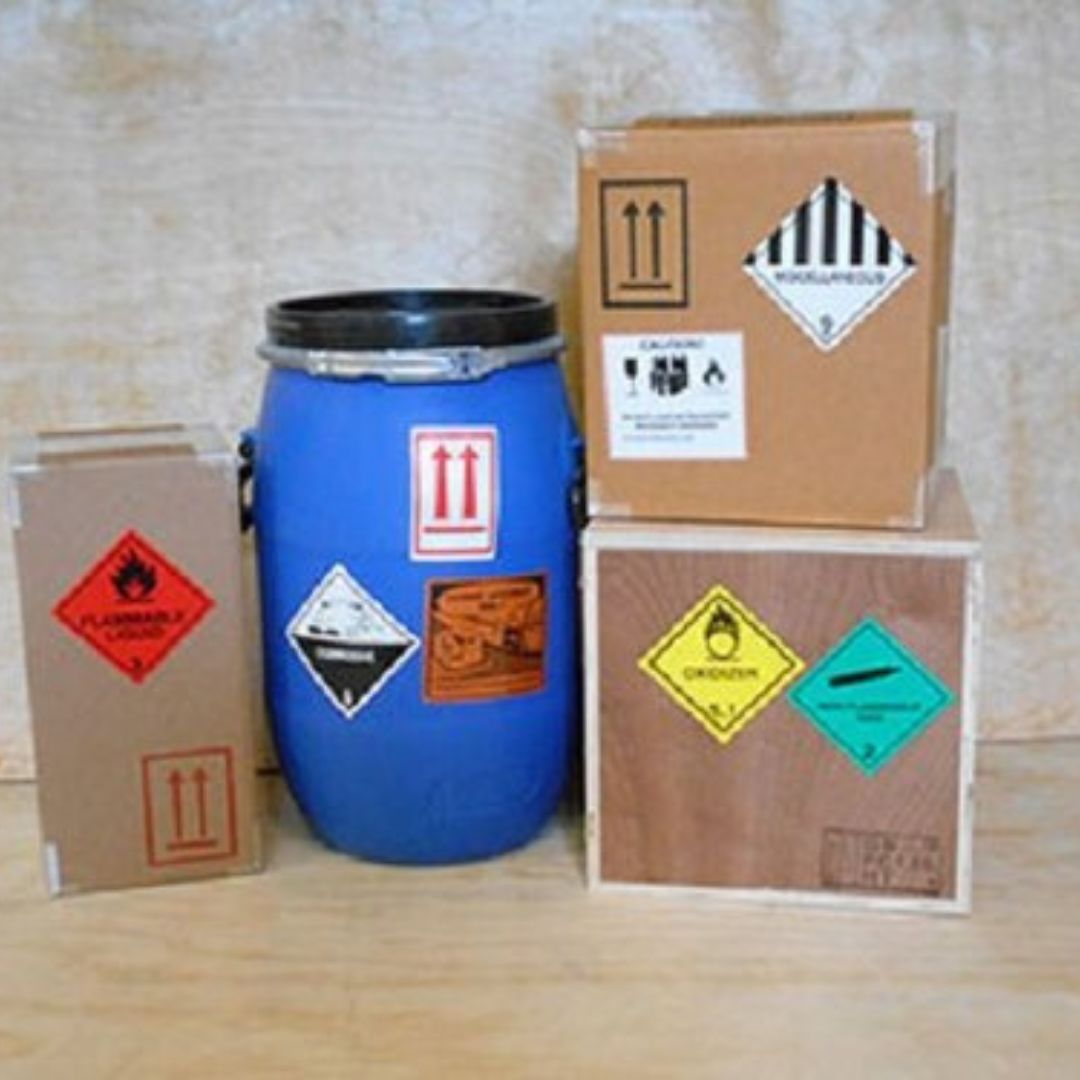
For ocean transportation, the method of marking the correct technical name and of affixing labels or applying stencils of labels on packages containing dangerous goods shall be such that this information will still be identifiable on packages surviving at least three months’ immersion in the sea.
In considering suitable marking and labeling methods, take account of the durability of the materials used and of the surface of the package.
Placarding the Cargo Transport Unit (ocean container, railway car, truck/trailer)
A placard similar to the dangerous goods labels must be applied to the outside of a cargo transport unit (ocean container, railway car, truck/trailer) to identify that dangerous goods are inside.
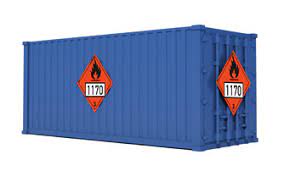
In considering placarding methods, take account of the durability of the materials used and of the surface of the cargo transport unit.
List of additional Markings and Placards
For Ground and Ocean Transportation:
- Elevated Temperature Mark

The above sign is for Elevated Temperature Mark Used on shipments carried at high temperatures.
(Liquids shipped at 100 oC or more; solids shipped at 240 oC or more)
- Environmentally Hazardous Substance/Marine Pollutant Mark

Used on shipments that can have a negative impact on marine life or the food chain if spilled into the waterways.
- Danger Placard

This is used on trucks/trailers carrying different classes or divisions of dangerous goods at the same time.
- Fumigation Placard
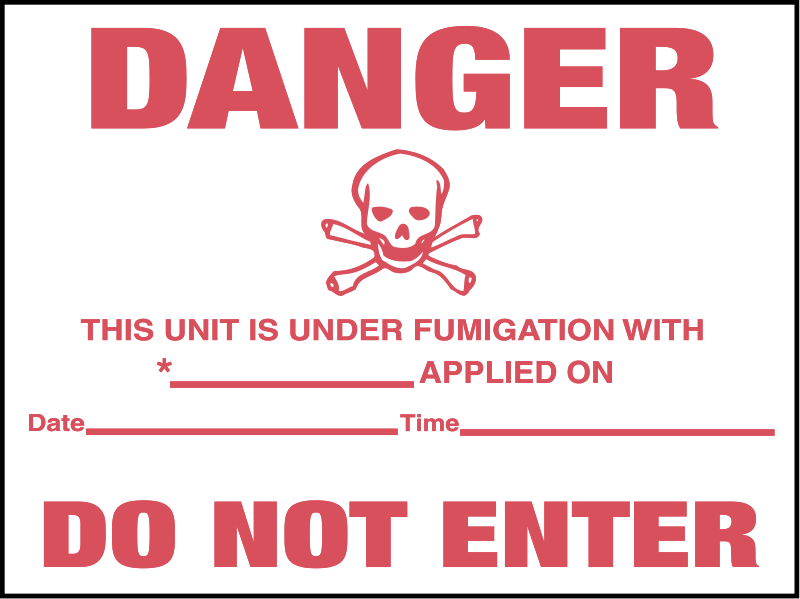
Used on transport containers those have been fumigated with toxic substances to eliminate insects and pests.
For Air Transportation:
- Magnetized Material Label
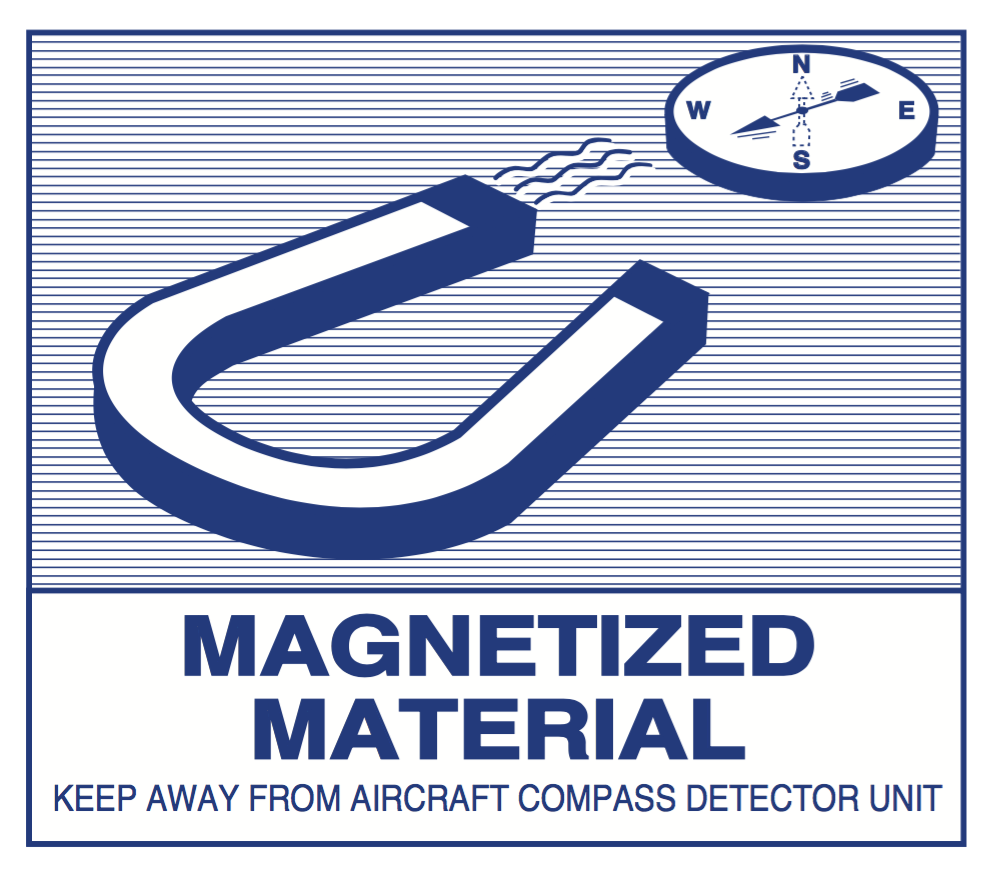
Used on packages containing magnetized items that may affect the aircraft’s instruments.
- Cryogenic Liquid Label
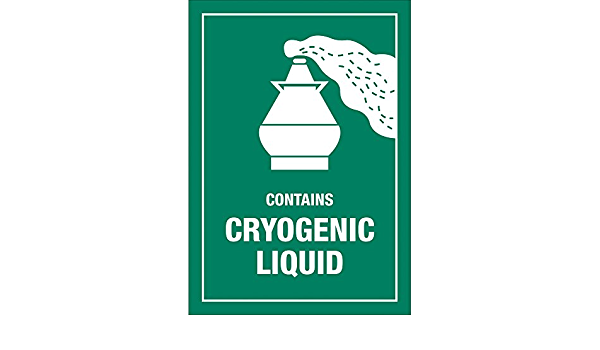
The level is used on packages containing super cold (cryogenic) liquids (e.g., liquid nitrogen).
- Orientation Labels

Used on packages containing liquids (either example permitted).
- Lithium Battery Label

Used as a warning not to transport damaged packages or items containing lithium batteries.
Documentation process for Sea, Air and Land Goods Shipments of Dangerous (DG) Goods
It is very important to declare the dangerous goods in transport documents before the shipment is made by the shippers/exporters/importers.
The declaration will aware all the parties in the transportation process on the type of hazard goods the vessel of airline will carry and will help determine their measures to mitigate the spill or leak.
The transport document is normally completed in English but may have a translation in another language accompanying it. It is the responsibility of the shipper/exporter/importer to complete the transport document. The freight forwarder or carrier should NOT be involved in the actual completion of the documentation. The declaration should be signed and dated by the consignor/supplier.
- Air Transportation
For air transportation, there is a standard dangerous goods transport document – the IATA shipper’s declaration for dangerous goods form. The shipper’s declaration must accompany the cargo air waybill, which must also contain certain prescribed information pertaining to the dangerous goods.
The IATA shipper’s declaration must be completed by the shipper/exporter. The importer must ensure the form is completed properly prior to the goods arriving at the destination port.
Example of an Air Dangerous Goods Transport Document (IATA Shipper’s Declaration for Dangerous Goods)

- Land Transportation
For land transportation, there is no specific form, but the bill of lading is used as the dangerous goods transport document, with information relating to the dangerous goods indicated on the form in a precise sequence.
- Ocean Transportation
For ocean transportation, there is a multimodal dangerous goods form. This document contains specific information relating to the dangerous goods, indicated in a precise sequence.
Example of an Ocean Dangerous Goods Transport Document (Multimodal Dangerous Goods Form)
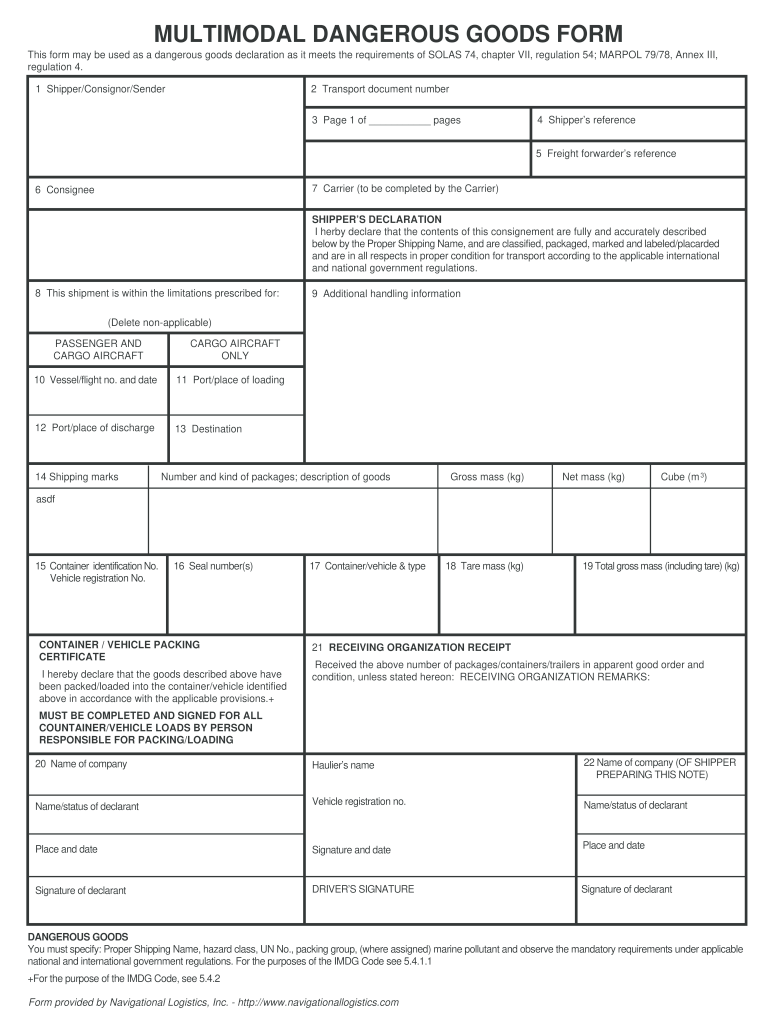
Container Packing Certificate
When packages containing dangerous goods are packed onto or into any cargo transport unit, such as an ocean container, flat, trailer, or other vehicle intended for transport by sea, those responsible for the packing of the cargo transport unit should provide a container/vehicle packing certificate specifying the container/vehicle/unit identification number(s) and certifying that the operation has been carried out in accordance.
If the container packing certificate is not available while shipment, the container will not be accepted by the shipping line for the transportation.
In the multimodal dangerous goods form, the container/vehicle packing certificate is included.

Fumigation for Safety of Human Health
What is fumigation of cargo?
Fumigation of cargo is a process of releasing toxic gases (pesticides) into a cargo hold or compartment for the purpose of eliminating or avoiding infestation by insects or other pests that may cause the cargo to deteriorate.
We all know that marine shipping containers are used to transport a variety of goods throughout the world, so trade companies rely on chemical fumigants to kill invasive alien species in cargo loads, preserve cargo loads, and maximize shipping techniques. If precautionary measures are not taken, these chemicals can be harmful to human health.
Further the trading companies can take steps like:
- The cargo transport unit should be fumigated in accordance with the recommendations on the Safe Use of Pesticides in Ships.
- Only cargo transport units that can be closed in such a way that the escape of gas is reduced to a minimum should be used for the transport of fumigated cargo.
- Cargo transport units should be identified with a warning sign affixed to the access door(s) incorporating the identity of the fumigant used, as well as the date and time of fumigation.
- The transport documents for a closed cargo transport unit should show the date of fumigation and the type and amount of fumigant used.
- Fumigants should not be applied to the contents of a cargo transport unit once it has been loaded aboard the ship.
Documentation and Identification of Cargo Transport Units under Fumigation
Transport documents associated with the transport of cargo transport units under fumigation should show the date of fumigation and the type and amount of fumigant used.
A closed cargo transport unit under fumigation should be identified with a warning sign as specified, affixed to the access door(s) in a location where it will be easily seen by persons attempting to enter the interior of the cargo transport unit, and incorporating the identity of the fumigant and the date and time of fumigation.
Conclusion
The reason that dangerous goods are so regulated is that they have the potential to cause a serious catastrophe. However, when they are handled and transported properly through the supply chain, they are relatively safe.
- Employers and employees in the supply chain – carriers, freight forwarders, shippers/exporters, and importers – must understand their responsibilities when it comes to dangerous goods.
- Employers and employees must receive the correct training for each mode of transport and for their individual job function.
- Employers and employees must use and follow the requirements of the current edition of the applicable set of dangerous goods regulations: IATA for air transport, IMO for ocean transport.
- All employers and employees in the supply chain must exercise due diligence to ensure that undeclared or hidden dangerous goods do NOT enter the transportation chain.
